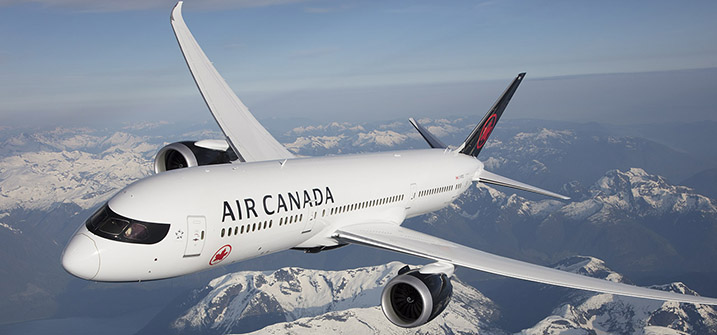
Everyone is familiar with watching aircraft coming and going at airports, but if you pay close attention to everything that happens below the wing, you will witness a well-choreographed ballet that makes sure that aircraft gets back in the air as fast as possible.
Nowhere is that more evident that at Vancouver International Airport - known as YVR - Air Canada’s trans-Pacific hub that can see between five and seven flights from Asia arrive, be prepared for their return journey and take to the skies within just a few hours.
The flights, operated on Air Canada’s Flagship Boeing 787-Dreamliners and Boeing 777s, mean that the airline handles nearly 2,000 passengers in a very short period of time.
In 2018, we carried more than 2,300 passengers per day on average from YVR to China, Taiwan, South Korea, Hong Kong, Japan and Australia.
“Certainly the busiest time of day comes into our late morning into our afternoon peak when we start to get all of our international arrivals coming in with quick turns out to go back to those destinations,” said Joey Hadjar, Manager, Aircraft Services in Vancouver for Air Canada.
With daily flights to Beijing, Hong Kong, Shanghai, Tokyo Narita and Seoul, as well as up to five weekly flights to Osaka and up to six weekly flights to Taipei, Air Canada connects YVR to the Asia Pacific countries like no other airline. There are also three flights to Australia later at night.
While on the ground, the aircraft is also inspected by Air Canada Maintenance, which verifies oil levels in the engines, tire pressures and completes a visual inspection of the aircraft exterior. Maintenance will also perform any work that needs to be done for the next flight while the aircraft is on the ground, with all efforts made to avoid delays.
Air Canada’s Dreamliners have an integrated inflight maintenance communication system that gather and report information to our maintenance teams on the ground. This helps our teams prepare for work that needs to be done and make sure all required parts are on hand ahead of time so that once on the ground, any issues are handled without delay, returning the aircraft to service for our passengers.
As a primary connection hub, Air Canada’s extensive network radiates out from here and YVR sees a lot of passengers transiting through the airport to other destinations throughout North America, whether they are arriving on flights from Asia or headed the other way. Because of its geographic location and the efficient connection processes, YVR is a preferred airport to connect through when travelling between North America and Asia.
“We want to make connections as efficient and seamless as possible. We want them to land, go through the process of Canada Customs and get out to their next destination. We then turn that aircraft and get it to its next destination as soon as possible,” Hadjar said.
After all the passengers and bags are off, then the aircraft has to be groomed for the next flight. Depending on the size of the aircraft, a team of employees boards the aircraft and gets right to work.
“Not only does it take all of our baggage processes, our cleaning processes and then our customer service team to load that aircraft and go, it takes a real coordination from all team members at the airport to turn that aircraft as soon as possible,” Hadjar said.
Whatever the purpose of your trip, Air Canada’s teams around the world want to get you where you need to go and everyone plays a small part in the process.
“Our customers are the people on the plane, business people travelling around the world, families saving all year to take their kids on a long-awaited Disneyland vacation. Our customers are also cargo shippers transporting critical cargo pieces that go all over the world,” Hadjar said. “From critical medical organs that we regularly transport, to perishables such as local seafood, fruit to industrial supplies. And really, everybody on our team has an important piece in this operation to make YVR the successful trans-Pacific hub it is in this global industry go and keeps Air Canada planes flying to all the destinations it does successfully and safely every day.”
